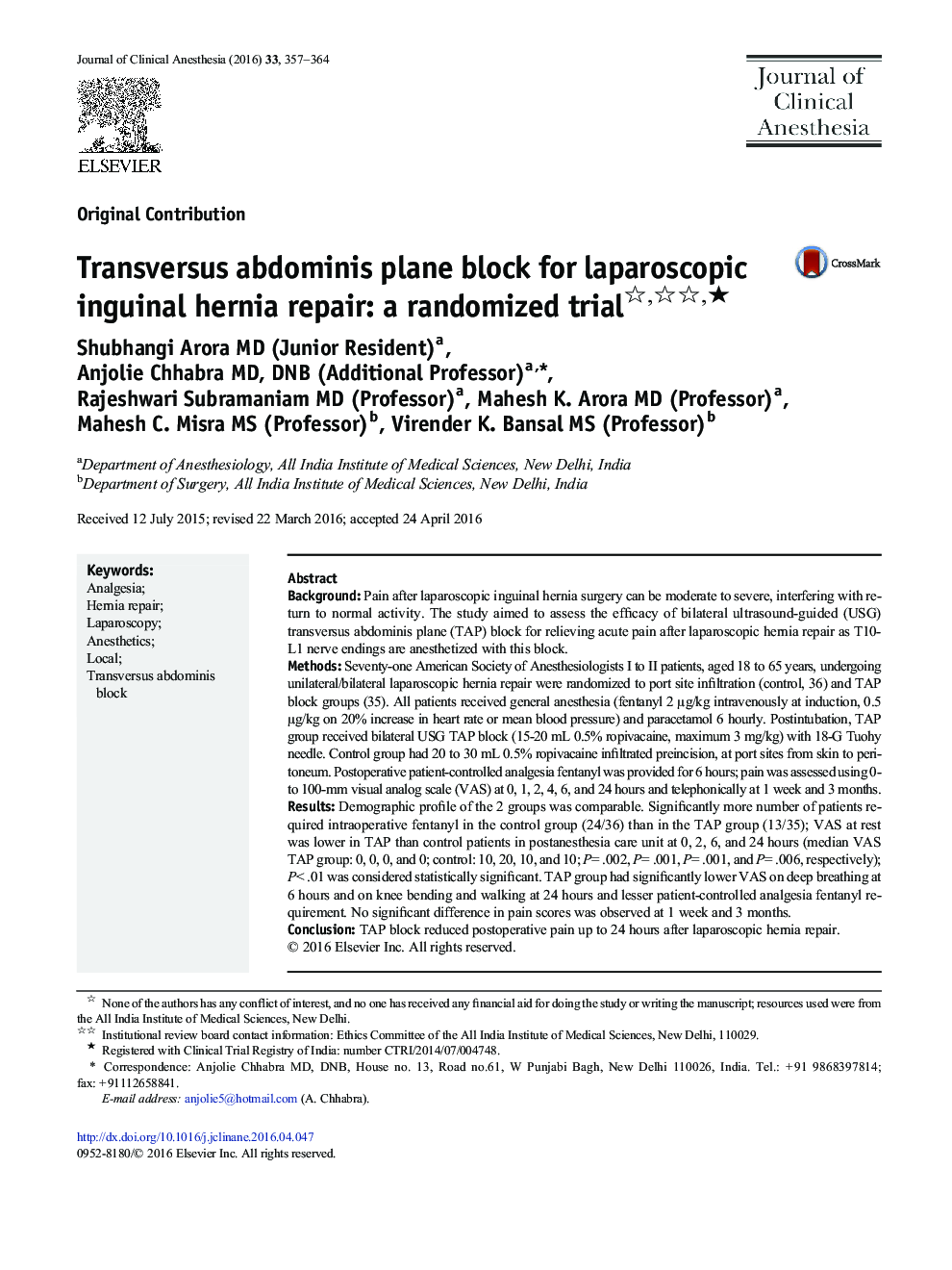| Article ID | Journal | Published Year | Pages | File Type |
|---|---|---|---|---|
| 2762125 | Journal of Clinical Anesthesia | 2016 | 8 Pages |
•Pain after laparoscopic hernia surgery (TAPP and TEP) can be moderate to severe.•The median perioperative fentanyl requirement was lower in the TAP group.•VAS at rest was lower in the TAP group for 24 hours postoperatively.•VAS on deep breathing was lower in the TAP group at 6 and 24 hours.•VAS on knee bending and walking was lower in the TAP group at 24 hours.
BackgroundPain after laparoscopic inguinal hernia surgery can be moderate to severe, interfering with return to normal activity. The study aimed to assess the efficacy of bilateral ultrasound-guided (USG) transversus abdominis plane (TAP) block for relieving acute pain after laparoscopic hernia repair as T10-L1 nerve endings are anesthetized with this block.MethodsSeventy-one American Society of Anesthesiologists I to II patients, aged 18 to 65 years, undergoing unilateral/bilateral laparoscopic hernia repair were randomized to port site infiltration (control, 36) and TAP block groups (35). All patients received general anesthesia (fentanyl 2 μg/kg intravenously at induction, 0.5 μg/kg on 20% increase in heart rate or mean blood pressure) and paracetamol 6 hourly. Postintubation, TAP group received bilateral USG TAP block (15-20 mL 0.5% ropivacaine, maximum 3 mg/kg) with 18-G Tuohy needle. Control group had 20 to 30 mL 0.5% ropivacaine infiltrated preincision, at port sites from skin to peritoneum. Postoperative patient-controlled analgesia fentanyl was provided for 6 hours; pain was assessed using 0- to 100-mm visual analog scale (VAS) at 0, 1, 2, 4, 6, and 24 hours and telephonically at 1 week and 3 months.ResultsDemographic profile of the 2 groups was comparable. Significantly more number of patients required intraoperative fentanyl in the control group (24/36) than in the TAP group (13/35); VAS at rest was lower in TAP than control patients in postanesthesia care unit at 0, 2, 6, and 24 hours (median VAS TAP group: 0, 0, 0, and 0; control: 10, 20, 10, and 10; P= .002, P= .001, P= .001, and P= .006, respectively); P< .01 was considered statistically significant. TAP group had significantly lower VAS on deep breathing at 6 hours and on knee bending and walking at 24 hours and lesser patient-controlled analgesia fentanyl requirement. No significant difference in pain scores was observed at 1 week and 3 months.ConclusionTAP block reduced postoperative pain up to 24 hours after laparoscopic hernia repair.
